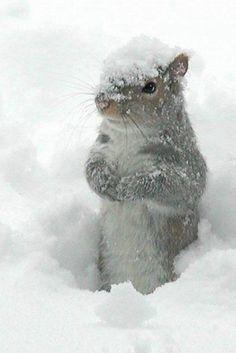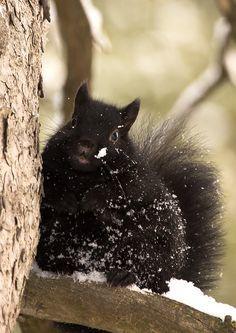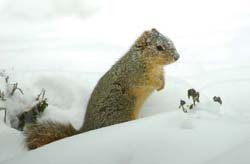To help celebrate National Squirrel Appreciation Day shop on-line and save 20% off our specialty feeders on Monday, January 21 and Tuesday, January 22.
Fun Facts About Squirrels


- The Eastern Gray Squirrel is our Southeastern Ontario native squirrel. They come in three colour morphs - gray, black and brindle (black fur with reddish tinges)
- The American Red Squirrel is native to Northern Ontario but has slowly moved into our area.
- Squirrels communicate with each other through various vocalisations and scent marking. They also use their tails as a signalling device, twitching it when uneasy to alert other squirrels of potential danger.
- Adult Squirrels can consume about one and a half pounds of seeds and nuts each week, which is roughly the equivalent of their own body weight.
- Squirrels favorite natural foods are hickory nuts, pecans, black walnuts, and acorns. Their favorite feeder food is roasted peanuts or black oil sunflower seeds their least favorite feeder food is Nyjer® (thistle) seed.
- Squirrels must drink water at least twice per day.
- A squirrel’s scalpel-sharp incisors grow about six inches per year. As with all the other members of the rodent family, squirrels must constantly gnaw on hard materials to keep them worn down and to sharpen them.
- In an hour’s time, a squirrel can collect and bury 25 nuts. Unable to remember each nut’s location, they find them again by using a highly developed sense of smell.
- Squirrels are extremely intelligent creatures. They are known to put on elaborate bogus food burying displays to deceive onlookers. The fake burials are to trick potential thieves, such as other squirrels or birds, into thinking that they have stored their food stock there. Any observers planning on taking the stash will then focus on the bogus burial site, allowing the squirrel to bury the real stash elsewhere safely.
- During a harsh winter a squirrel may loose up to 25% of its body weight.
- The name “squirrel” originates from the Greek words for shade and tail.
- Squirrels will have a litter of three to four young around early January and again in early August. The average life expectancy of these youngsters in the wild is approximately one year, although some captive squirrels have lived up to 15 years.
- Squirrels may den in the ground, tree cavities, and in nests they construct that are called dreys. Summer dreys are located in tree branches and consist of twigs and leaves. Winter dreys are waterproof and have a lining of bark, lichen, moss, fur and leaves.
- Squirrels can jump up to five feet vertically and eight feet between trees or structures. Placing feeders and baffles outside of their jumping range will help to deter them.
- The Eastern Gray Squirrel uses its tail as a shield when fighting, as a blanket in cold weather, and, sometimes, as an umbrella during rain storms.
- The Eastern Gray Squirrel stocks its winter pantry by burying up to 10,000 nuts each fall. It also feeds on grapes, fungi, grasses, larval and adult insects, and amphibians.
Take time today to enjoy these intelligent creatures who share our neighbourhood.


